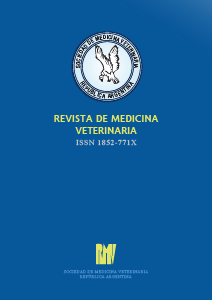Multiple research centers, including universities and Laboratorio Elea Phoenix (Elea Laboratories) from Argentina, recently concluded preclinical animal research investigating the safety and pharmacokinetic attributes of an experimental, novel nasal spray-based product developed to inhibit and suppress SARS-CoV-2, the virus behind COVID-19. This investigational nasal formulation was administered in an animal model (pig) and involves the use of Ivermectin, the macrocyclic lactone-based medication that evidences antiviral effects against several distinct positive-single-sense-strand RNA viruses, including SARS-CoV-2. More specifically, the Argentinian preclinical researchers developed a high-concentration nasal formulated investigational product for administration in a primary location for concentrated SARS-CoV-2 penetration and replication—the nasopharyngeal tissue. These animal studies revealed that the experimental formula and delivery method was not only well tolerated but also safe with no adverse events identified. This research represents a preclinical effort; and for experimental use in humans in that nation, the researchers would need to file for an equivalent investigational new drug application. In Argentina, new clinical trials are regulated by the National Administration of Food, Drugs and Medical Devices and known as ANMAT.
The researchers, including Jorge Errecalde, were recently on record declaring, “To the best of our knowledge, this is the first time that a nasal IVM (ivermectin) spray formulation is developed and its safety and pharmacokinetic performance determined in a pig model, the most appropriate animal model to use in translational research into humans.” Officially titled, “Ivermectin Repurposing for COVID-19 therapy: Safety and Pharmacokinetic Assessment of a Noel Nasal Spray Formulation in a Pig Model,” the piece was authored by Errecalde J, et al. and uploaded to the preprint server bioRxiv.
The research team observed that although this Ivermectin-based nasal formulation shows great promise as a future potential treatment for COVID-19, “In the same direction, further research is also needed to evaluate the potential advantages of a combined nasal plus oral treatment regimen to further contribute to IVM repurposing in COVID-19 therapy.”
A concise summary of the paper was authored by Sally Robertson BSc in News Medical Life Sciences.
The Research Centers
Research institutions include Elea Laboratories who have been profiled by TrialSite for other Ivermectin-based COVID-19 research. Back in May, Elea Laboratories launched a proof of concept trial investigating the use of Ivermectin in hospitalized patients. Although that study was supposed to conclude end of September, no updates have been posted as of yet.
Based in Buenos Aires, Elea Laboratories is a biotechnology company that both invests in ongoing and internal research and development operation while also specializing in partnering with international biopharmaceutical companies to in-license promising products for development and commercialization in South America.
Other research institutions represented in this preclinical study included National University of La Plata (Universidad Nacional de Plata), Universidad Nacional del Centro de la Provinca de Buenos Aires, eBiogensis Bago SRL, and Enfermedades Tropicales Universidad Nacional de Salta.
Lead Research/Investigator: Dr. Jorge Errecalde, National University of La Plata
